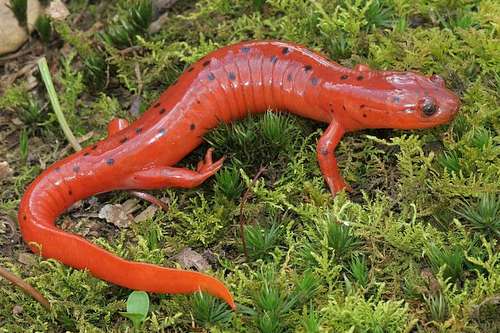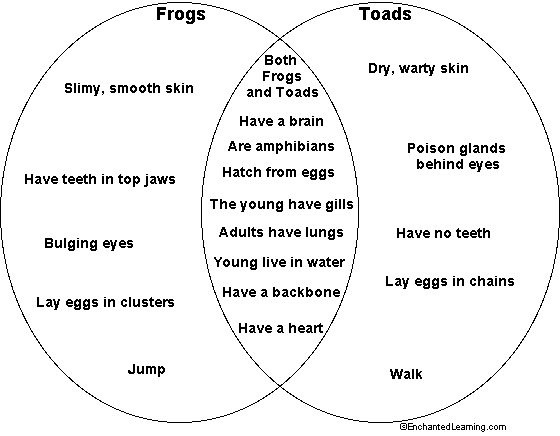By: Hudson River, Lily Pad White, Elijah Allemander, and Miles Froggelly
Our Sources:
VIEWER DISCRETION IS ADVISED
http://www.domestic-animals.com/popups/amphibian-pic.jp
http://www.youtube.com/watch?v=QLz8RK4teHM
http://www.youtube.com/watch?v=56YW2Mu_mXk&feature=related
http://www.enchantedlearning.com/coloring/amphibians.shtml
http://steinunn.files.wordpress.com/2009/03/1155-3004frogs-posters.jpg
http://www.youtube.com/watch?v=_aj2qcjFFXg
http://www.bexley.gov.uk/media/image/o/t/biodiv-art-newts
The Textbook: A Parade of Life
http://img31.imageshack.us/img31/8516/mud4carl.jpg

www.domestic-animals.com/popups/amphibian-pic.jp
Amphibians first appeared 360 million years ago. Amphibian means "double life". When they are immature they breathe through gills, they are fish-like. Amphibians are vertebrates (animals with backbones) and they are cold-blooded (their body temperature adjusts to the environment they are in). Most live in water when they are little. When amphibians become adults, they live on land. Amphibians breathe through their lungs and moist skin once they move to land. Their skin contains many glands and amphibians lack scales and claws. Amphibians are cold-blooded, scaly, and soft-skinned animals. They are mainly found in or close to a body of water. One reason for this is that amphibians' eggs lack a hard external shell and if the eggs are not put in water, they will dry out. Also, their skin must remain moist because amphibians breathe through their skin in addition to their longs. So, if a frog's skin dries up, it will suffocate.


The nervous system in a frog is well-developed. Its large eyes, which pop out of its head, are very sensitive and provide sharp vision. A clear membrane covers its eyes so they won't dry up on land or get damaged when they are swimming. Their circulatory system goes on a double loop. One loop takes the oxygen-rich blood and the oxygen-poor blood and transports it to the heart and lunges. The next loop takes the oxygen-rich and poor through the heart and around the body.

Salamanders eat insects, worms, snails, and small fish. They are classified as Kingdom Animalia (animals), Order Chordata (animals with notochords), Class Amphibia (amphibians), Order Caudata (or Urodela, 10 families, 63 families, and about 440 species of salamanders and newts). Salamanders evolved during the Jurassic period, about 150 or 200 million years ago (during the time of the dinosaurs). Salamanders keep their tales throughout their lives and have two pairs of legs (like frogs). Salamanders' hind legs are not as developed as frogs and they can't jump as far. They have to live in moist areas like all amphibians. They lay their eggs in water for the same reasons as frogs. One type of salamander, the mud puppy, lives in water their whole life and breathe through gills.


Like other amphibians, frogs spend their lives near water because they must return to the water to lay their eggs. Frogs lay their eggs in the water. When they hatch into tadpoles, they breathe with gills, and swim using a tail. As they mature; grow older, they lose their tail, and they develop lungs for breathing air. In rough climates, frogs bury themselves in sand or mud and hibernate (sleep deeply through the cold winter). Frogs eat insects, catching them with their long, sticky tongue. They also eat small fish and worms. Frogs are classified as: Kingdom Animalia (animals), Phylum Chordata, Class Amphibia (amphibians), Order Anura (frogs and toads). The first true frogs evolved during the early Jurassic period, around 150 or 200 million years ago, also known as the time of the dinosaurs .

A Gerrothorax was an aquatic animal that was about 3 ft (1 m) long. It looked like a large tadpole with a flattened body. It had a short, wide head, two small, close-set eyes, small, webbed, hind limbs, and a small tail. It had 3 pairs of gills throughout its life, which meant it could live in the water even as an adult. The color of a Gerrothorax is unknown but we know that they were carnivores and most-likely ate fish. Gerrothorax are classified as Subclass Labyrinthodontia, Order Temnospondyli, Genus Gerrothorax, species rhaeticus.

This is a circle diagram showing the differences between toads and frogs. See the similarities and differences written in the diagram.
Questions:
- What is an amphibian? Give at least two examples.
2. When did the first amphibian appear?
3. Name three features of an amphibian.
4. Name the most common amphibians.
5. What are differences between toads and frogs? What are the similarities?
6. What was the oldest known amphibian? Is it still living?
7. Explain the life cycle of a frog. Explain one of a salamander.
8. Explain (briefly) the anatomy of a frog. What is in their bodies?
9. What *order are newts and salamanders in? What are they closely related to? *Like Species or Genus.
10. Explain the features of frogs' eyes and how they help them.
BONUS!!! (EVEN WE DON'T KNOW THE ANSWER): HOW DID THAT FROG STAY ALIVE FOR SO LONG IN THE PIRANHA VIDEO???????


These frogs are posion arrow frogs. These are newts, on the picture on the bottom
shows what they looked like in the time of the
Jurassic period (during the time of the dinosaurs).
The top picture is of a modern newt.
Ack:
Our Sources:
http://www.domestic-animals.com/popups/amphibian-pic.jp
http://www.youtube.com/watch?v=QLz8RK4teHM
http://www.youtube.com/watch?v=56YW2Mu_mXk&feature=related
http://www.enchantedlearning.com/coloring/amphibians.shtml
http://steinunn.files.wordpress.com/2009/03/1155-3004frogs-posters.jpg
http://www.youtube.com/watch?v=_aj2qcjFFXg
http://www.bexley.gov.uk/media/image/o/t/biodiv-art-newts_1
The Textbook: A Parade of Life
http://img31.imageshack.us/img31/8516/mud4carl.jpg
Comments (15)
Rose said
at 9:01 am on May 25, 2010
Miles do 1 and 2 and type up notes please
Rose said
at 9:02 am on May 25, 2010
Hudson do 3 and 4
Rose said
at 9:03 am on May 25, 2010
Miles also take notes on pg. 76- 82 in textbook do as much as you can
Rose said
at 10:43 am on May 25, 2010
Go to enchantedlearning.com/subjects/amphibians/ for more diagrams
Rose said
at 11:44 am on May 26, 2010
This is good so far guys!! Make sure you provide us with the links (ack) to where you got the pictures from. Also, you better add the book to your ack section!! Don't forget to underline or highlight important words to help your classmates answer your questions (see Birds 6S WIKI for example)!! -- Stephan
these are Stephan's comments
Annie said
at 10:37 am on May 27, 2010
nice job btw
Camille said
at 6:48 pm on Jun 1, 2010
were are the videos?
Camille said
at 6:48 pm on Jun 1, 2010
oh nevermind
ZackAttack said
at 7:42 pm on Jun 1, 2010
i think you guys mean scaleless. not scaly.
michaelmotorcycle said
at 8:16 pm on Jun 1, 2010
not a bad job but do we have to be specific on ? 4?
Michaella said
at 9:01 pm on Jun 1, 2010
The frog stayed alive probably because he didn't have his organs bitten off yet...
Skippy said
at 9:54 pm on Jun 1, 2010
where is the awnser for #4
Skippy said
at 10:01 pm on Jun 1, 2010
and #6
Freddy said
at 9:38 pm on Jun 2, 2010
how did you make an upsidedown title
Hudson said
at 8:20 pm on Jun 3, 2010
look it up
You don't have permission to comment on this page.